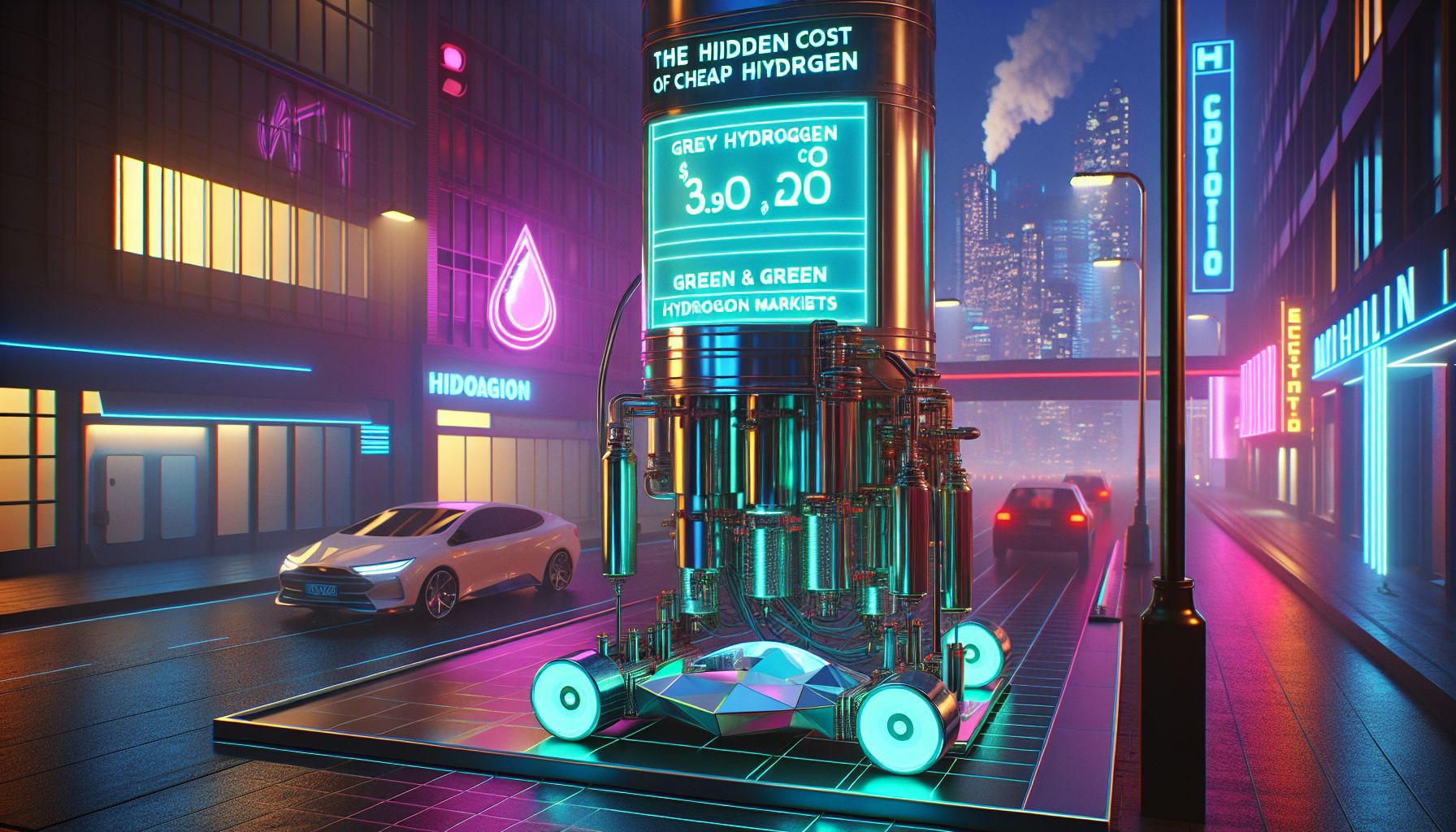The Hidden Cost of Cheap Hydrogen: Why Grey H2 Dominates Despite Climate Concerns

London, Friday, 22 November 2024.
While grey hydrogen remains the cheapest form at £1.50-2.50/kg and dominates 99.7% of Europe’s hydrogen market, it comes with a staggering environmental price tag: 9-12 tonnes of CO₂ released per tonne produced. As nations race towards net-zero goals, this cheap but dirty hydrogen faces increasing pressure from green alternatives and policy changes.
The Economic Appeal of Grey Hydrogen
I must admit, the allure of cheap grey hydrogen is hard to resist, especially for industries focused on cost efficiency. At just £1.50 to £2.50 per kilogram, it’s the go-to choice for many[1]. But what’s behind this low price? Well, grey hydrogen is primarily produced through steam methane reforming (SMR), a process that uses natural gas, which is relatively abundant and inexpensive. This makes grey hydrogen one of the most economically viable options for sectors like refining and ammonia production. However, this financial advantage masks a bigger issue—its hefty carbon footprint.
Environmental Impact: The Hidden Cost
Now, the real kicker with grey hydrogen is the environmental impact. Producing one tonne of hydrogen through SMR releases an alarming 9 to 12 tonnes of CO₂[1]. That’s like driving a petrol car for over 40,000 kilometres! With global CO₂ emissions already at a whopping 38.5 gigatonnes in 2022[7], adding more isn’t exactly helping our net-zero aspirations. And let’s be honest, as much as industries love a bargain, the planet can’t afford these emissions.
Policy Shifts and Emerging Alternatives
But here’s where it gets interesting—governments are starting to push back. The U.S. Inflation Reduction Act, for instance, is incentivising the switch to green hydrogen[1]. In Europe, countries like Germany and the Netherlands are investing heavily in renewable energies to support green hydrogen initiatives[1]. Even China and India, two of the largest consumers of grey hydrogen, are feeling the pressure to adapt, despite their reliance on coal and natural gas[1].
The Role of Carbon Capture
Enter carbon capture, utilisation, and storage (CCUS). This technology could potentially reduce the carbon footprint of grey hydrogen production by up to 90%, effectively turning it into ‘blue hydrogen’[1]. Saudi Arabia and Qatar are already exploring these technologies, making strides to align economic benefits with environmental responsibilities[1]. It’s a promising pivot, but widespread implementation is not without its challenges.
Looking Ahead: The Future of Grey Hydrogen
So, what’s next for grey hydrogen? In the short term, it’s likely to maintain its relevance, especially where cost outweighs environmental concerns. But as green and blue hydrogen technologies become more competitive and policies tighten, the grey hydrogen market may face a contraction[1]. The industry is at a crossroads—balance economic realities with the pressing need for cleaner alternatives. As we move forward, the question is not just about cost, but about what price we’re willing to pay for a sustainable future.